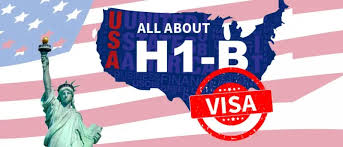Immigration Law at South Korea
Here’s a comprehensive and current overview of immigration law in South Korea, covering key areas from visa categories to naturalization and evolving policies:
1. Entry & Visa Options
Short-Term Entry: Nationals of many countries can enter visa-free for up to 90 days within the Schengen area equivalent policy. Others must apply for a standard visa before arrival.
Working Holiday Visa (H-1): Available to young adults (usually ages 18–30) from partner countries. Enables travel and limited employment for up to one year.
Digital Nomad Visa ("Workation Visa"): Launched as a pilot in January 2024. Allows international remote workers earning at least double South Korea’s GNI per capita (≈ $64,000 in 2023) to live and work in Korea for up to two years. Spouses and minor children can accompany visa holders without separate visas.
2. Long-Term Visas & Residence Permits
South Korea offers diverse long-term visas depending on purpose and status:
| Visa Type | Purpose |
|---|---|
| D-2 (Student Visa) | Foreigners enrolled in university or language programs |
| E-9 (Non-professional Work) | Foreign workers in industries like restaurants, issued under the Employment Permit System |
| D-8 (Investment Visa) | Starting or managing your own small/medium business; investment requirement rising (e.g., formerly 50M–100M KRW) |
| F-2 (Residency) | For spouses of Korean citizens or F-5 permanent residents; eligibility may extend to investors or refugees |
| F-4 | Temporary residency for ethnic Koreans abroad (e.g., from overseas Korean communities) |
| E-7-4 (Point-based Long-term Residence) | Requires minimum high income (≥ 25 million KRW), point evaluation based on salary, age, language, and can lead to long-term status. |
3. Permanent Residency & Citizenship
Permanent Residency (F-5 Visa)
Available after 2–5 years of residency depending on visa types and conditions.
Offers long-term stay without sponsor requirement.
Citizenship (Naturalization)
Three naturalization categories:
General Naturalization (~5 years residency):
Age 19 or 20+, clean record, financial stability (e.g., assets ≥ 30M–60M KRW), knowledge of Korean language and culture.
Simplified Naturalization (~3 years residency):
For those with Korean parentage, birth in Korea (with Korean-born parent), adult adoptees, or spouses of Korean nationals (2–3 years marriage and residency).
Special Naturalization:
For individuals with exceptional skills, contributions to Korea, or special circumstances—shorter or waived residency.
Dual Citizenship & Military Service:
Generally, South Korea requires renunciation of prior nationality within one year. Exceptions for spouses, highly skilled individuals, or minors.
Dual nationals must choose by age 22; males face conscription unless they relinquish S. Korean citizenship.
4. Integration, Rights & Social Context
South Korea is advancing integration services due to demographic shifts—foreign residents now make up around 4.1% of the population. Support includes language classes and migrant assistance, though challenges such as limited anti-discrimination legislation and risks within the Employment Permit System persist.
Summary Table
| Category | Key Details |
|---|---|
| Entry Visas | Visitor, Working Holiday, Digital Nomad (pilot) |
| Long-Term Visas | Student (D-2), Work (E-9, D-8), Spouse/Residency (F-2), Ethnic (F-4), Points (E-7-4) |
| Permanent Residency | F-5 visa after 2–5 years |
| Citizenship | General (5 yrs), Simplified (~3 yrs), or Special naturalization |
| Dual Nationality | Rare; exceptions exist, with military conscription implications for males |
| Integration Trends | Growing migrant support amidst structural limitations |
Let me know if you'd like help exploring a specific visa pathway (e.g., investment E-7 visas), naturalization documentation, or monitoring reforms like digital nomad visa or integration programs!





0 comments